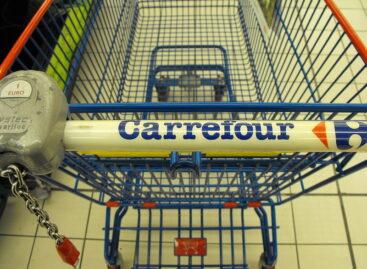E-commerce trends in 2024
The VÁM 2021 customs duty regulation has been the latest big change to affect domestic e-commerce trends. As a consequence of domestic economic policy, record inflation kicked down the door in 2022 and the situation was made worse by the war – this is how we arrived in 2023.
This article is available for reading in Trade magazin 2024/2-3
Although inflation is falling, the war is still on, and e-commerce trends continue to search restlessly for their way to stability, but stability and predictability still look questionable in 2024. Even in this unstable environment, we can see some trends in our data that will hopefully allow us to draw some accurate conclusions about e-commerce trends in 2024.
1. E-consumer penetration can hardly go further, but it is also unlike to reduce. We have been measuring around 83% for years.
2. In this second half of 2022 (after COVID) there was an upturn, but inflation ended this. Although in 2023 the per capita online shopping basket value increased in nominal terms, if inflation is taken into account, we have seen a decline in 2023 for the e-commerce sector – a historic moment.
3. Per capita online shopping frequency is stable, with the average online shopper buying 12-14 times a year – this has been the case for years, although we have measured higher figures.
4. In Hungary the troubled e-commerce sector is once again driven by Asia and not by the EU, and especially not by domestic online shops. This will almost certainly remain the case in 2024.
5. The penetration of online grocery shoppers won’t expand significantly in 2024 either. At the time of COVID, the proportion of online grocery shoppers was at 15-17%, and this hasn’t changed since. In short, those who “learned” to buy groceries online at the time of the pandemic will continue to do so, but the group won’t expand.
6. We wrote it last year and we write it again in 2024: the end user logistics market is undergoing a big transformation. What is happening in the parcel delivery market is stunning, as today 65% of the population report seeing a parcel locker near their home, with parcel locker use currently standing at 45%.
7. New sustainable solutions are emerging in the B2C logistics market, but their spread dynamics are still questionable. Green logistics solutions such as delayed delivery (i.e., logistics companies waiting until enough orders are collected from an area to make a single delivery, and by this reducing emissions) are something that online shoppers are open to in certain product categories.
8. Online C2C shopping processes will continue to strengthen. The penetration of sales related to social networking sites (e.g. Marketplace) has strengthened very much, at the expense of online classifieds sites (e.g. Jófogás) in 2022, then growing hand in hand in 2023. For instance Vinted has entered the market and already at the end of 2023 we measured a registrant penetration above 20%.
9. The structure of the product categories purchased online also changed in 2023, making it difficult to estimate what will be the top product category bought online in 2024. Online purchases of OTC products, consumer electronics and DIY products surged during COVID, while in 2023 OTC products and especially cosmetics strengthened.
10. The often cited “consumer experience” will play an even more prominent role in 2024 and AI (or more advanced algorithms, if you like) will be crucial in this. The integration of AR into the online shopping process and image-based product search seem to be an attractive online shopping solution for more than 60-70% of shoppers. In 2024 online sales will become more concentrated, i.e. shoppers will spend their money in a smaller and smaller number of online shops. //
Related news
Food and beverage innovation plunges nearly 50% since 2007: Mintel
The market research firm said about a quarter of items…
Read more >UN: ecommerce nowhere as established as in the Netherlands
No country in the world has as many internet users…
Read more >Shein unveils UK investment plans and launches ‘circularity fund’
Shein has pledged to invest £211m (€250m) over the next…
Read more >Related news
Valeo Foods Completes Acquisition Of Appalaches Nature
Valeo Foods Group has completed the acquisition of Appalaches Nature,…
Read more >Carrefour grows in France and Brazil, lags behind in rest of Europe
Carrefour says it is rather pleased with its financial results…
Read more >Food and beverage innovation plunges nearly 50% since 2007: Mintel
The market research firm said about a quarter of items…
Read more >








